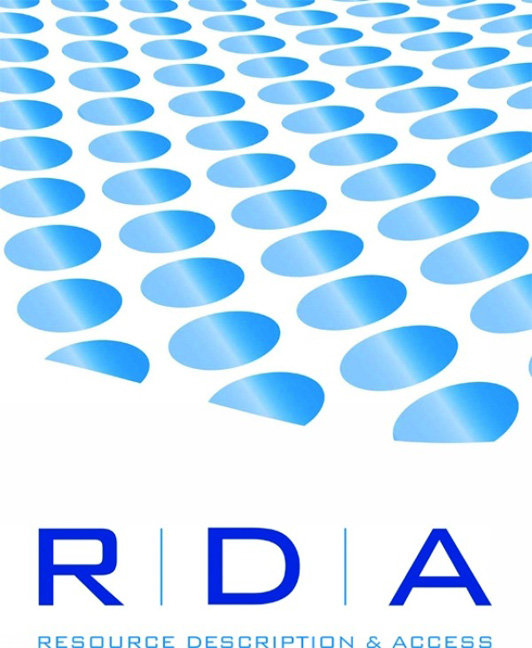Book contents
- Frontmatter
- Content Development for RDA: Resource Description and Access
- Preface to the 2013 Revision
- Contents
- 0 Introduction
- SECTION 1 RECORDING ATTRIBUTES OF MANIFESTATION AND ITEM
- SECTION 2 RECORDING ATTRIBUTES OF WORK AND EXPRESSION
- SECTION 3 RECORDING ATTRIBUTES OF PERSON, FAMILY, AND CORPORATE BODY
- SECTION 4 RECORDING ATTRIBUTES OF CONCEPT, OBJECT, EVENT, AND PLACE
- SECTION 5 RECORDING PRIMARY RELATIONSHIPS BETWEEN WORK, EXPRESSION, MANIFESTATION, AND ITEM
- SECTION 6 RECORDING RELATIONSHIPS TO PERSONS, FAMILIES, AND CORPORATE BODIES
- SECTION 7 RECORDING RELATIONSHIPS TO CONCEPTS, OBJECTS, EVENTS, AND PLACES
- SECTION 8 RECORDING RELATIONSHIPS BETWEEN WORKS, EXPRESSIONS, MANIFESTATIONS, AND ITEMS
- SECTION 9 RECORDING RELATIONSHIPS BETWEEN PERSONS, FAMILIES, AND CORPORATE BODIES
- SECTION 10 RECORDING RELATIONSHIPS BETWEEN CONCEPTS, OBJECTS, EVENTS, AND PLACES
- Appendices
- A Capitalization
- B Abbreviations and Symbols
- C Initial Articles
- D Record Syntaxes for Descriptive Data
- E Record Syntaxes for Access Point Control
- F Additional Instructions on Names of Persons
- G Titles of Nobility, Terms of Rank, Etc.
- H Dates in the Christian Calendar
- I Relationship Designators: Relationships between a Resource and Persons, Families, and Corporate Bodies Associated with the Resource
- J Relationship Designators: Relationships between Works, Expressions, Manifestations, and Items
- K Relationship Designators: Relationships between Persons, Families, and Corporate Bodies
- L Relationship Designators: Relationships Between Concepts, Objects, Events, and Places
- Glossary
- Index
I - Relationship Designators: Relationships between a Resource and Persons, Families, and Corporate Bodies Associated with the Resource
from Appendices
Published online by Cambridge University Press: 08 June 2018
- Frontmatter
- Content Development for RDA: Resource Description and Access
- Preface to the 2013 Revision
- Contents
- 0 Introduction
- SECTION 1 RECORDING ATTRIBUTES OF MANIFESTATION AND ITEM
- SECTION 2 RECORDING ATTRIBUTES OF WORK AND EXPRESSION
- SECTION 3 RECORDING ATTRIBUTES OF PERSON, FAMILY, AND CORPORATE BODY
- SECTION 4 RECORDING ATTRIBUTES OF CONCEPT, OBJECT, EVENT, AND PLACE
- SECTION 5 RECORDING PRIMARY RELATIONSHIPS BETWEEN WORK, EXPRESSION, MANIFESTATION, AND ITEM
- SECTION 6 RECORDING RELATIONSHIPS TO PERSONS, FAMILIES, AND CORPORATE BODIES
- SECTION 7 RECORDING RELATIONSHIPS TO CONCEPTS, OBJECTS, EVENTS, AND PLACES
- SECTION 8 RECORDING RELATIONSHIPS BETWEEN WORKS, EXPRESSIONS, MANIFESTATIONS, AND ITEMS
- SECTION 9 RECORDING RELATIONSHIPS BETWEEN PERSONS, FAMILIES, AND CORPORATE BODIES
- SECTION 10 RECORDING RELATIONSHIPS BETWEEN CONCEPTS, OBJECTS, EVENTS, AND PLACES
- Appendices
- A Capitalization
- B Abbreviations and Symbols
- C Initial Articles
- D Record Syntaxes for Descriptive Data
- E Record Syntaxes for Access Point Control
- F Additional Instructions on Names of Persons
- G Titles of Nobility, Terms of Rank, Etc.
- H Dates in the Christian Calendar
- I Relationship Designators: Relationships between a Resource and Persons, Families, and Corporate Bodies Associated with the Resource
- J Relationship Designators: Relationships between Works, Expressions, Manifestations, and Items
- K Relationship Designators: Relationships between Persons, Families, and Corporate Bodies
- L Relationship Designators: Relationships Between Concepts, Objects, Events, and Places
- Glossary
- Index
Summary
I.0 Scope
This appendix provides general guidelines on using relationship designators to specify the relationship between a resource and a person, family, or corporate body associated with that resource, and lists relationship designators used for that purpose.
I.1 General Guidelines on Using Relationship Designators
The defined scope of a relationship element provides a general indication of the relationship between a resource and a person, family, or corporate body associated with the resource (e.g., creator, owner). If the relationship element is considered sufficient for the purposes of the agency creating the data, do not use a relationship designator to indicate the specific nature of the relationship.
Relationship designators provide more specific information about the nature of the relationship (e.g., author, donor).
Use relationship designators at the level of specificity that is considered appropriate for the purposes of the agency creating the data. For example, the relationship between a screenplay and the screenwriter responsible for the work can be recorded using either the specific relationship designator screenwriter or the more general relationship designator author.
If none of the terms listed in this appendix is appropriate or sufficiently specific, use another concise term to indicate the nature of the relationship.
I.2 Relationship Designators for Persons, Families, and Corporate Bodies Associated with a Work
I.2.1 Relationship Designators for Creators
Record an appropriate term from the following list with the authorized access point or identifier for a creator of a work (see 19.2). Apply the general guidelines on using relationship designators at I.1.
architect A person, family, or corporate body responsible for creating an architectural design, including a pictorial representation intended to show how a building, etc., will look when completed.
landscape architect An architect responsible for creating landscape works.
artist A person, family, or corporate body responsible for creating a work by conceiving, and often implementing, an original graphic design, drawing, painting, etc.
sculptor An artist responsible for creating a three-dimensional work by modeling, carving, or similar technique.
author A person, family, or corporate body responsible for creating a work that is primarily textual in content, regardless of media type (e.g., printed text, spoken word, electronic text, tactile text) or genre (e.g., poems, novels, screenplays, blogs). […]
- Type
- Chapter
- Information
- RDA: Resource, Description and Access, 2013 Revision , pp. 947 - 954Publisher: FacetPrint publication year: 2013



